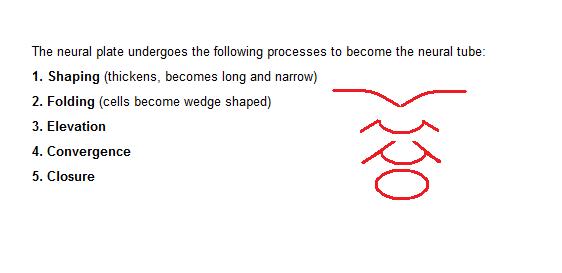Difference between revisions of "CNS Development - Anatomy & Physiology"
| Line 4: | Line 4: | ||
<br /> | <br /> | ||
<br /> | <br /> | ||
| − | For the appropriate development of the CNS a number of important basic requirements must be achieved. For example, the appropriate haemopoeitic cells must differentiate into specific cells (either neurons or glia) and any axons must extend to appropriate positions in order to form synapses. Development of the CNS is a complex process and complete coordination is required to facilitate the correct procedure of cell differentiation and the establishment of the correct intracellular connections. | + | For the appropriate development of the CNS a number of important basic requirements must be achieved. For example, the appropriate haemopoeitic cells must differentiate into specific cells (either neurons or glia) and any axons must extend to appropriate positions in order to form synapses. Development of the CNS is a complex process and complete coordination is required to facilitate the correct procedure of cell differentiation and the establishment of the correct intracellular connections. A range of neurotrophic factors regulate these interactions including FGF, nerve growth factor, laminin, brain derived neurotrophic factor and neurotrophin 3. |
The Central Nervous System's embryological origin is from the '''neural ectoderm'''. This is formed as the default pathway from ectoderm to neuroectoderm during development. In the presence of the Lateral Plate Mesoderm (LPM) factor however, ectoderm forms epidermis. To overcome this in development the notochord secretes a LPM factor antagonist allowing the formation of neuroectoderm directly above it. This forms the '''neural plate''' and folds to form the '''neural tube'''. | The Central Nervous System's embryological origin is from the '''neural ectoderm'''. This is formed as the default pathway from ectoderm to neuroectoderm during development. In the presence of the Lateral Plate Mesoderm (LPM) factor however, ectoderm forms epidermis. To overcome this in development the notochord secretes a LPM factor antagonist allowing the formation of neuroectoderm directly above it. This forms the '''neural plate''' and folds to form the '''neural tube'''. | ||
Revision as of 13:04, 4 August 2011
Development of the Central Nervous System (CNS) includes development of the brain, spinal cord, optic and auditory systems, as well as surrounding supporting cells including ependymal cells, astrocytes, oligodendrocytes and microglia. Information within this page will exclude development of the Peripheral Nervous System (PNS) which includes nerve and ganglia formation. For further information on PNS development, please see the PNS development page.
For the appropriate development of the CNS a number of important basic requirements must be achieved. For example, the appropriate haemopoeitic cells must differentiate into specific cells (either neurons or glia) and any axons must extend to appropriate positions in order to form synapses. Development of the CNS is a complex process and complete coordination is required to facilitate the correct procedure of cell differentiation and the establishment of the correct intracellular connections. A range of neurotrophic factors regulate these interactions including FGF, nerve growth factor, laminin, brain derived neurotrophic factor and neurotrophin 3.
The Central Nervous System's embryological origin is from the neural ectoderm. This is formed as the default pathway from ectoderm to neuroectoderm during development. In the presence of the Lateral Plate Mesoderm (LPM) factor however, ectoderm forms epidermis. To overcome this in development the notochord secretes a LPM factor antagonist allowing the formation of neuroectoderm directly above it. This forms the neural plate and folds to form the neural tube.

- Differentiation of the neural tube at the anterior then forms the brain.
- The diagram on the right shows how the brain transforms during development.
Origins of Functional Types of Neurone
| Nerve | Origin |
|---|---|
| Sensory - Afferent | Neural crest |
| Motor - Efferent | Basal plate of neural tube |
| Association - Interneurones | Alar plate of neural tube |
| This article is still under construction. |



